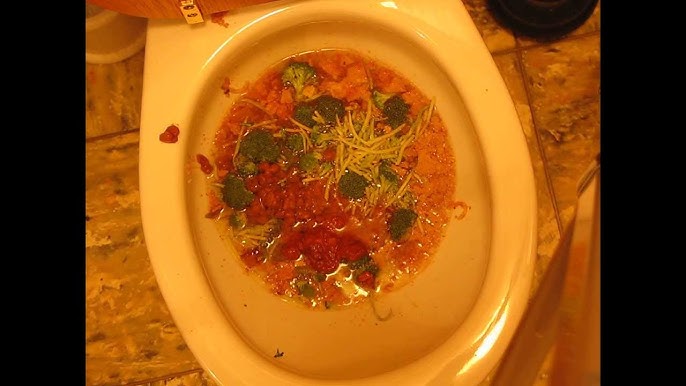Is it Feasible to Dispose of Food Waste in the Toilet?
Is it Feasible to Dispose of Food Waste in the Toilet?
Blog Article
Just about every person seems to have his or her own ideas on the subject of What Can Happen If You Flush Food Down the Toilet?.

Introduction
Many individuals are usually confronted with the issue of what to do with food waste, particularly when it involves leftovers or scraps. One usual concern that arises is whether it's okay to flush food down the commode. In this short article, we'll delve into the reasons people might consider flushing food, the consequences of doing so, and alternate techniques for correct disposal.
Reasons that people could take into consideration flushing food
Lack of awareness
Some individuals may not be aware of the possible harm brought on by purging food down the bathroom. They might wrongly believe that it's a harmless technique.
Benefit
Flushing food down the bathroom may look like a quick and easy solution to dealing with undesirable scraps, specifically when there's no close-by trash can available.
Idleness
In many cases, people may merely pick to flush food out of sheer idleness, without thinking about the effects of their activities.
Repercussions of flushing food down the commode
Environmental influence
Food waste that ends up in rivers can contribute to contamination and injury water ecosystems. In addition, the water used to flush food can stress water resources.
Plumbing problems
Flushing food can bring about blocked pipelines and drains pipes, causing pricey plumbing fixings and aggravations.
Kinds of food that must not be flushed
Fibrous foods
Foods with fibrous textures such as celery or corn husks can get tangled in pipelines and cause blockages.
Starchy foods
Starchy foods like pasta and rice can soak up water and swell, causing clogs in pipes.
Oils and fats
Greasy foods like bacon or cooking oils must never ever be purged down the toilet as they can solidify and cause blockages.
Correct disposal methods for food waste
Using a waste disposal unit
For homes geared up with waste disposal unit, food scraps can be ground up and purged via the pipes system. Nevertheless, not all foods appropriate for disposal in this fashion.
Recycling
Certain food product packaging materials can be recycled, lowering waste and reducing environmental effect.
Composting
Composting is an eco-friendly means to take care of food waste. Organic materials can be composted and utilized to enhance soil for horticulture.
The value of proper waste administration
Decreasing ecological damage
Proper waste administration techniques, such as composting and recycling, assistance lessen air pollution and maintain natural deposits for future generations.
Securing pipes systems
By staying clear of the practice of flushing food down the commode, property owners can prevent pricey pipes repairs and maintain the integrity of their plumbing systems.
Final thought
Finally, while it might be appealing to flush food down the toilet for benefit, it's important to understand the prospective effects of this activity. By taking on proper waste administration techniques and throwing away food waste properly, individuals can contribute to healthier plumbing systems and a cleaner environment for all.
FLUSH FOOD DOWN THE TOILET?
FLUSHING FOOD CAN CAUSE BLOCKED DRAINS IN YOUR HOME
All of the plumbing fixtures in your home are connected to the same sewer pipe outside of your home. This outdoor sewer pipe is responsible for transporting all the wastewater from your home to the Council sewer mains. Even small pieces of food that go down the kitchen sink can cause problems for your sewer. It should therefore be obvious that flushing larger bits of food, such as meat, risks a clog in either the toilet itself or the sewer pipes. Flushing greasy food is even more problematic because oil coagulates when it cools, coating the interior lining of your pipes.
THE TOILET IS NOT A BIN
Food isn’t the only thing that people shouldn’t be flushing down the toilet. People use the toilet to dispose of all kinds of things such as tampons, makeup wipes, dental floss, kitty litter and even underwear. Water goes to great lengths to educate residents about the high costs and stress placed on wastewater treatment systems simply from people flushing the wrong stuff down the toilet. It costs taxpayers millions of dollars each year, and homeowners thousands in blocked drain repairs.
FLUSHING FOOD IS A WASTE OF WATER
Flushing food is a waste of our most precious resource - water. In June this year Level 1 water restrictions were introduced to protect water supply from drought conditions. Much of New South Wales continues to be affected by prolonged drought with recent figures revealing up to 97 per cent of the state remains in drought. Depending on whether you have a single or dual flush toilet, every single flush uses between five and 11 litres of water. In the current climate this is a huge amount of water to be wasting on flushing food that should be placed in the bin (or better yet, the compost).
https://www.jabplumbingsolutions.com.au/blog/can-you-flush-food-down-the-toilet

I hope you enjoyed reading our post about Is it safe to flush food (especially rice) down the toilet?. Thanks for taking time to browse our blog. Sharing is nice. Helping others is fun. Many thanks for your time spent reading it.
Call Today Report this page